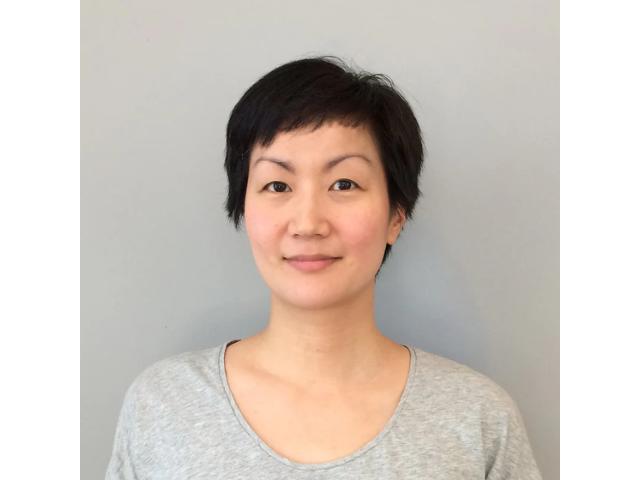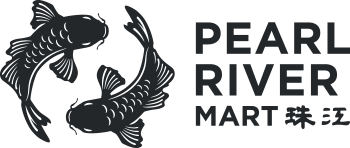
Artist-in-Residence Amy Hwang: How Passion and Pragmatism Can Go Hand in Hand
If you haven’t watched New Yorker cartoonist Amy Hwang’s TED talk, we suggest you do so right now. Not only does she tell her story from how she went from a full-time architect to a freelance cartoonist, all while juggling the challenges of being a single parent, she does so through some pretty darned funny cartoons.
We had the chance to speak to the co-curator of our latest exhibition, Asian Babies: Works from Asian ‘New Yorker’ Cartoonists, about how a college newspaper inspired her to start drawing again, you don’t have to be the best artist to be a cartoonist, and following one’s passion can be the more practical decision.
Where are you from and where did you grow up?
I was born and raised in Texas, primarily in Richardson, a suburb of Dallas. Growing up in the suburbs of Dallas is different now than how it used to be. There wasn’t as large of an Asian community back then. After I left for college in NYC, that’s when it exploded. There was a Vietnamese noodle place on every corner, bubble tea places, all this good food. I was jealous because I didn’t live there anymore, and the neighborhood in NYC I lived in did not have these options. It was a relative Asian food desert when I was growing up. In my school, there were only a small number of Asians in a graduating class of over 800.
Have you always been interested in drawing?
I’ve drawn since I was a tiny kid. Actually my mom — she worked as a computer programmer for Blue Cross Blue Shield — always drew too. She was into painting and sculpture, and her art was always around the house.
I wish I had enrolled in more visual arts courses in high school. In middle school we had to pick an instrument and I picked the cello. In high school I continued with music and stayed in the orchestra. In retrospect I should have taken art classes. I’m not that musical. I don’t have that innate musical talent. The only art classes I took were life drawing classes with my mom at the community college. But it wasn’t enough to apply to art school once it was time for me to go to college. It wasn’t enough for a portfolio.
I understand you went to Barnard College (my alma mater!) and that was when you started drawing again.
Yes, I was reading The Spectator [Columbia University’s student newspaper]. Every day they would have a little single-panel cartoon. I thought, I can do this. Of course you say this, but it’s a lot harder than it looks. Still, I would show up with a cartoon every week and they would say sure. [Laughs] Maybe they didn’t have enough cartoons. I would come up with one idea a week and they would almost always print it. It was nice, immediately getting published like that. I pretty much stuck with it until graduation.
What were the cartoons about?They were about college life and very autobiographical. They were often lack-of-sleep related.

©Amy Hwang, Columbia Daily Spectator
I was an architecture major and pulled a lot of all-nighters. I would have nightmares about missing exams because I often slept instead of going to class.
After graduation and while you were working in architecture, did you continue working on cartoons?
In the majority of my 20s I didn’t. I didn’t have any hobbies or extracurricular activities. I’d spend my free time after work going out. It was fun. You walk everywhere, see the city, hang out with friends. I also watched reruns on television.
I didn’t start doing cartoons again until I was 29. After I made the commitment to start submitting regularly to The New Yorker, I had no free time. I had to say no to hanging out with friends. I knew I wouldn’t get the cartoons done if I didn’t dedicate the time. So I spent my weekends and nights working on cartoons.
What made you decide to start submitting regularly to The New Yorker?
I went through a phase in my late 20s when I kept wondering, “Am I really going to be doing architecture for the rest of my life?” During that time I went with my dad [who worked in marketing research] on a trip to Las Vegas and I told him I didn’t know if I should be doing architecture. He was always the parent to ask, “If you didn’t have to worry about making money, what would you do?” I thought I’d like to do interior design, so I worked for an interior designer, but that lasted only a few months. I realized it wasn’t for me.
It was around then that I started submitting cartoons. But I never started it thinking I would become a cartoonist. It doesn’t pay that much compared to a steady job. It’s much riskier. After working for several years, the idea of not having a job and becoming a cartoonist seemed crazy. I thought I would just do it on the side.
I stuck with that for a while, but it was tough, especially after I had my daughter. I was working full time, and she was with her dad some days. I worked on my cartoons whenever my daughter wasn’t with me. In my 20s it was easier. When you have a kid, you have less time. I only had a couple of days on the weekends, which wasn’t enough time. I was working all the time. I had childcare costs so I could work, but I was working to pay for those childcare costs. I was burning the candle at both ends.

©Amy Hwang, The New Yorker
That was when I reassessed everything in my life. People always say to me, “You followed your passion and became a cartoonist.” But it was also a practical decision for me. My daughter has special needs. She’ll most likely not go to college. If I knew there was a fair chance that she would go, I would’ve stayed at my job. But now I have more flexibility in terms of being there for her. My career allows me that flexibility.I don’t have to depend on someone else or worry about explaining to my company about not being in the office.
Leaving my job took a lot of stress out of my life. A year later I still feel that it was the best decision I ever made. It’s not necessarily easier, but it would be much harder if I still had my job.
Financially I’m in a better or similar situation. I’m paying much less in taxes. I don’t have a nanny. And I’m spending more fun time with my mom too. She used to fly in from Texas to supplement child care during school breaks, but now it’s more about vacations and spending time together. It’s a blessing to spend time with family, even if you drive each other crazy.
I could really relate to your cartoons about working life. For instance, the one about pretending to care before going into a meeting.

©Amy Hwang
When I was working at my job, I realized I was doing somebody else’s passion. I could be doing my own thing. I spent so much time working at this company, realizing the CEO’s dream. “Pretend to care” was literally what I was thinking. After I decided I was going to leave I wondered, “Do any of us really care? In the whole scheme of things, how important is all this?” It’s ironic because I worked at a great company. They were all about finding your purpose in life. That helped me reassess what I wanted to do. And that was cartoons.
Tell me about your experience of submitting to The New Yorker. I understand they had open office hours.
I actually didn’t go to the office. I would mail in my cartoons in a manilla envelope with a self-addressed stamped envelope. It was all through snail mail. Now everyone does it through Submittable or goes to the office.
I would try to gauge their interest level. I started getting rejections more quickly, which I saw as them opening my envelopes first. Some of the cartoons would be missing and I thought, “Maybe they’re keeping them on file.” Then I got a call from Bob Mankoff [the former cartoon editor] and he told me I sold one. That was in 2009, and they published it in 2010.
How long did that take to sell one?
It was after 10 months of submitting 10 cartoons a week. It doesn’t seem that long but it was kind of long. After they bought one, they didn’t buy another one for another year. It was about two years ago that I started selling more regularly.
What’s your process when you create a cartoon?
It usually starts with a concept and not much doodling at first. The ideas come from my own life. Things that are on my mind or that I’ve come across. I should probably get out more and get more ideas. [Laughs] Every now and then when I’m doodling I’ll come up with something without the caption. But mostly it’s the thoughts I have about my own life. And from there I start thinking of concepts.
What’s your relationship with Pearl River? Do you have any favorite memories or products?
I’m very excited about having this exhibit at Pearl River. In college I would go to the one on Canal and Broadway. I would get house slippers there. It was a lot of fun to see all that stuff. It felt very old school and had a certain smell to it. It was one of those places you’d take your friends from out of town because that kind of store wasn’t common in other parts of the country. I’m really excited that the exhibit gets to be there. It fits perfectly.
Do you believe in inspiration? If so, where do you get it?
I do think that trying new things can inspire you. Or putting yourself in situations that are not comfortable. If you’re in an outsider in a situation, you can see it from a different or humorous perspective. That doesn’t mean I put myself in situations like that often. [Laughs]
What’s something you’re obsessed with right now?
I started making my own cleaning products. My friend had a recipe and I went from there. It’s a lot of vinegar, rubbing alcohol, baking soda, and essential oils. You could even use a cheap vodka as a disinfectant. It’s better for the environment. Plus I feel good about it and enjoy it.
What advice would you have for someone interested in doing what you do?
Sometimes I get emails from aspiring cartoonists asking for advice. I tell them if it’s a strong idea, the drawing doesn’t need to be that well drawn. You don’t have to be a professional illustrator. Sometimes I say I do cartoons because I can’t draw that well. That’s partly why my drawings have a very spare look.
I would also say it’s important to have your own voice. Even if the cartoon is about cowboys, it still has to have something coming from you. You need a sense of the artist coming through in the cartoon. You’re almost assured your cartoon will be original then. The more it’s from your own voice and not trying to be a New Yorker cartoon, and the more in touch with who you are, your vulnerabilities, and how you think through things — all of that will make your work stronger.
ASIAN BABIES: WORKS FROM ASIAN 'NEW YORKER' CARTOONISTS will be on view in our TriBeca gallery from Oct. 4, 2019 through Jan. 12, 2020. Be sure to also check out our interview with ASIAN BABIES co-curator Jeremy Nguyen.
